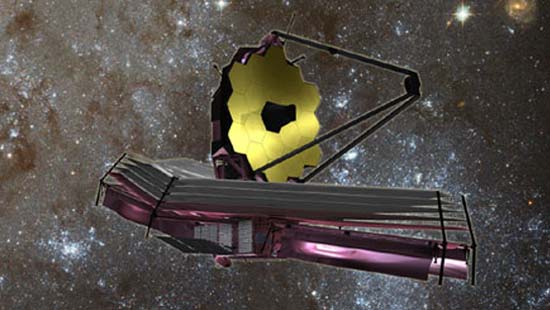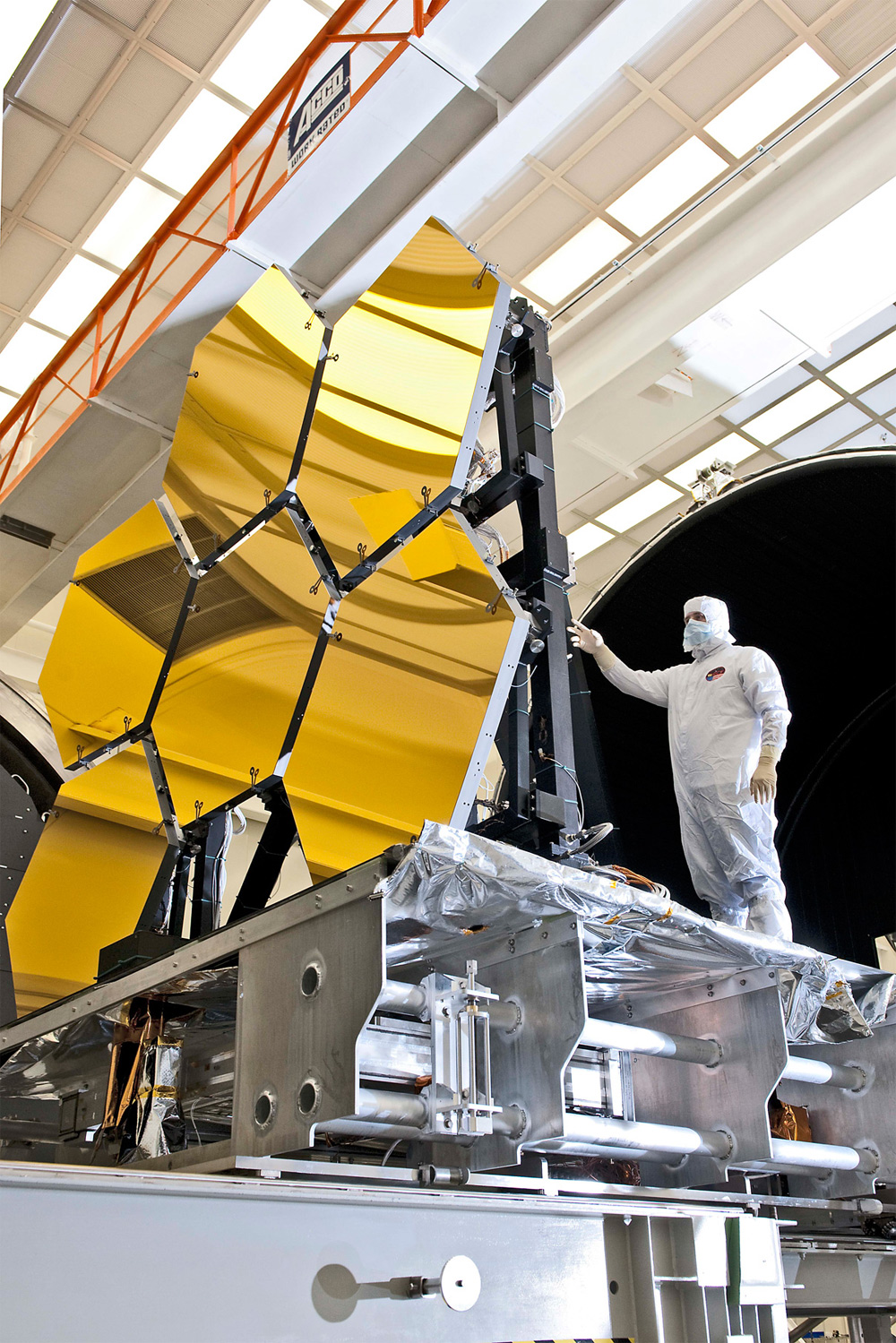Keeping NASA's Next Space Telescope Under Control: Q&A with Scott Willoughby

NASA's next generation James Webb Space Telescope is an ambitious infrared observatory that is expected to yield exciting results about the universe, but in recent years, the project's swelling budget has been a major hurdle.
Pegged as the successor to the nearly 22-year-old Hubble Space Telescope, the James Webb Space Telescope (JWST) will probe the most distant reaches of the universe with its sensitive infrared instruments.
The $8.8 billion observatory has become synonymous with cost overruns, and last summer, House appropriators recommended scrapping the project entirely. But JWST survived, and in November, President Barack Obama granted NASA $17.8 billion for the 2012 fiscal year, which included full funding for the observatory.
Still, the project remains a source of contention, and critics claim that JWST is tying up valuable funds from other worthy science missions. Obama's proposed 2013 budget for NASA revealed earlier this week, for example, includes deep cuts to planetary science missions to help pay for JWST. [Photos: Building the James Webb Space Telescope]
SPACE.com recently caught up with Scott Willoughby, JWST program manager at Northrop Grumman Aerospace Systems (the company under contract to design the telescope), to talk about the progress being made, the next major milestones, and how they got past wrestling with the big, bad budget:
SPACE.com: When funding for JWST was secured for 2012, that must have been a huge relief. Do you consider that a big victory for the project?
Scott Willoughby: It's been really good. Being fully funded at that level enabled us to get aggressive and really try to retire the last bit of our engineering risk. We want to get that done as soon as possible and start putting hardware on the floor. We've been able to pull the spacecraft's CDR (Critical Design Review) up by 10 months, the mirrors are done, and those are just a few examples. There were a number of things in that budget profile that got approved, and we're looking much better in 2012.
Breaking space news, the latest updates on rocket launches, skywatching events and more!
SPACE.com: All the back and forth that went on with funding for JWST, how did that affect your work? And when the money for 2012 was approved, what was your message for your team?
Willoughby: The message was always: let's not wait for a re-plan to continue working. We had certain things that we slowed down, but we worked to complete parts so that once we got the extra money, we were able to continue and not lose time. We were prepared, so when the money came through, that enabled us to accelerate things because now we're able to fill in some of the shallow areas. We're still looking at October 2018 for launch, and this increases our confidence in that launch date. [Giant Space Telescopes of the Future (Infographic)]
SPACE.com: When President Obama signed those figures into law, it must have been a boost for the entire team.
Willoughby: It's a huge morale boost. Full funding was an indication of support for the program. Over the summer, the outcry from the public was incredible and very positive, from the letter written by 30-something Nobel Laureates to the Facebook page set up to save JWST. Social media gave people the ability to communicate that they felt this wasn't just important for astrophysics, but important for the future of science and leadership.
This is a program that we want to see succeed, not fail, so for the team working on it, even though you're hearing people complain about your program — whether it's cost overruns or schedule — but all the meanwhile you're coming in to work and working hard. But to see the public come out and support the program like that was really positive.
SPACE.com: What are some of the major challenges in designing this observatory?
Willoughby: Webb does two things kind of different, and one thing harder, than Hubble. One major difference is that it's looking in the infrared, so we're finding this light that's both very faint and in the infrared spectrum. To get this information, we had to be bigger and colder than Hubble. That drove a lot of technological challenges.
We also had to come up with a design that is big but stowable, so we had to make segmented optics that are also adaptable to create the shape they need to in orbit. We needed to have a large segmented mirror that we could command. [Video: Coating the James Webb Space Telescope]
All 18 of those mirror segments have now completed their testing — the last mirror was done in December, and that was impressive. It's taken years to polish these things and get them through two rounds of testing to get the prescription right, so that was one of the major technological leaps.
Webb was envisioned to do something that has never been done before. We're coming at it from the sense that science cannot be constrained by engineering limits. We want to get the innovators out there to make the thing that's going to do it. If science constrained itself by what we're capable of today, then we'd be done. We'd never be able to move to that next step.
SPACE.com: JWST underwent a big re-plan effort to create a more sound schedule and a more realistic budget for the program. What kinds of adjustments were made to make sure that things don't get out of hand again?
Willoughby: We segmented the re-plan by fiscal year, based on the profile that NASA put forward for the program. One of the most fundamental things is to have a reserve and to anticipate what I call known unknowns. We wanted to build in margin into the schedule so we could make high confidence estimates. And that's what we did in the re-plan. We phased the schedule, phased the cost margin into the system so that we could execute and make the year's commitments. With each phase, we looked at each year, and showed the play in the out years and looked at what we need.
The best testament to that is, in the last 13 months, we as a program — NASA and myself on behalf of Northrop — we committed to doing these major milestones and we finished them all.
SPACE.com: Do you now feel increased pressure to meet the objectives that have been laid out?
Willoughby: There's always pressure to perform, from the managers to the engineers to the scientists. When I went back to the team at the end of the year, I said, 'Folks, there are no more excuses. We must succeed.' And that's not anything other than acknowledging that we put that commitment forward. We have to be very good stewards of the public's money.
When you see that come together and the program gets funded for the next year, I won't say it's because of that, but if we had not met our milestones in 2011, it probably would have been a much tougher decision to fully fund us for the next year.
SPACE.com: How do you respond to critics of JWST who say that funding for the project comes at the expense of other science missions?
Willoughby: The person who I thought said it best is Senator (Barbara) Mikulski at an event we did at the Maryland Science Center. No matter what, people are competing for what they want to do. That's going to go on forever. Between the government and the head of NASA, they basically came together and said: James Webb is a must-have for its importance to science and technology. They said this is something that must be done, so now it's about doing that as best as we can and as cost-effectively as we can.
There's no doubt that this is a debate, but the leadership at the most senior levels said this is what we need to do. We've been given a plan and we're committed to doing this. What should be satisfying to everyone is that when we succeed on that, everyone benefits from a great mission.
You can follow SPACE.com staff writer Denise Chow on Twitter @denisechow. Follow SPACE.com for the latest in space science and exploration news on Twitter @Spacedotcom and on Facebook.

Denise Chow is a former Space.com staff writer who then worked as assistant managing editor at Live Science before moving to NBC News as a science reporter, where she focuses on general science and climate change. She spent two years with Space.com, writing about rocket launches and covering NASA's final three space shuttle missions, before joining the Live Science team in 2013. A Canadian transplant, Denise has a bachelor's degree from the University of Toronto, and a master's degree in journalism from New York University. At NBC News, Denise covers general science and climate change.



